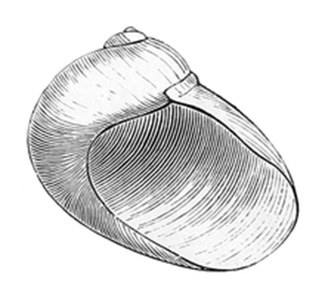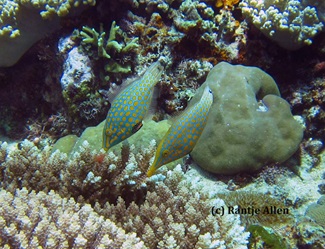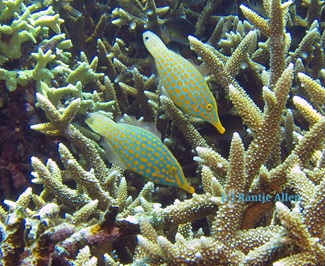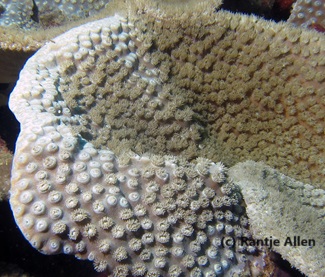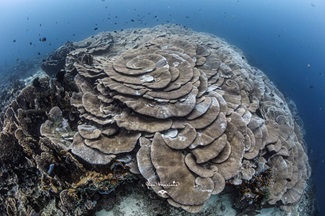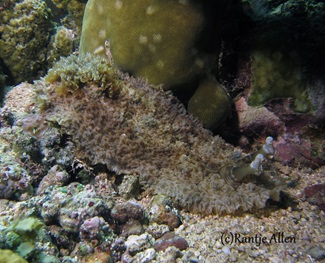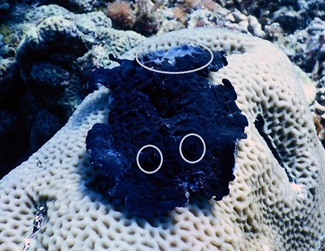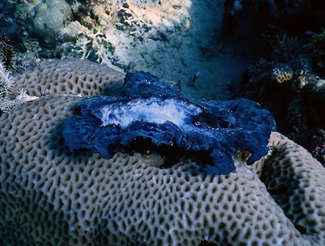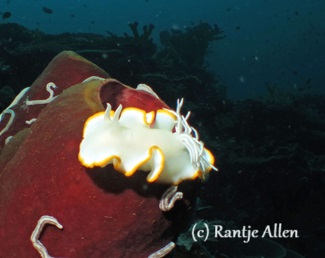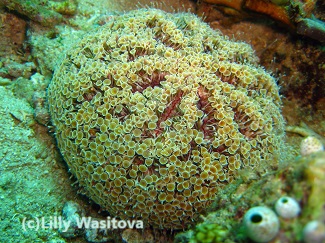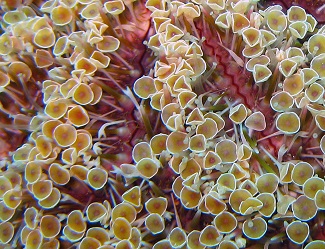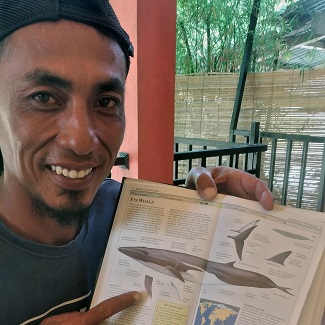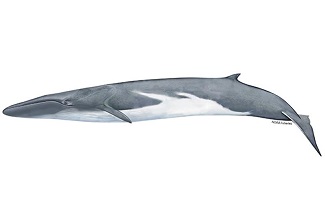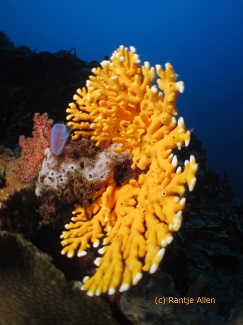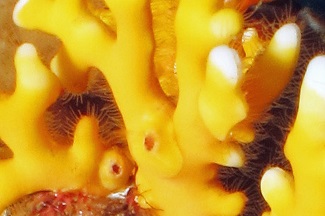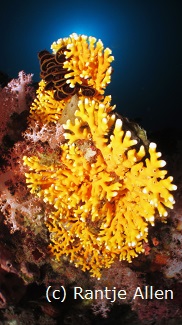Loading content - please wait...
Black Velutin Snail makes rare appearance
Coriocella nigra, or the Black Velutin Snail, so easily hides that divers rarely see it. However, one day this dive season, staff found one during the safety stop. This one was only the second snail we have seen in over twenty years of diving here.
Coriocella nigra, a rarely seen snail
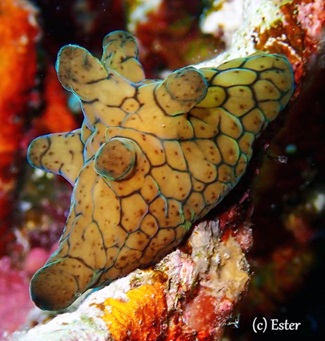
The Black Velutin Snail is so unusual that it gained its own genus. In 1824, Henri Marie Ducrotay de Blainville created a new genus and species for this snail. He named it Coriocella nigra. This name is still valid today. At the time, there was only this one species in the genus Coriocella. Currently, there are several more, based on more recent scientific studies.
It lives in rocky environments from very shallow depths down to about fifteen meters. The one in our photo measured about 8 centimeters long. This snail can grow a bit longer. Although found throughout the Indo-Pacific region, divers rarely seen it, despite its size. Natural camouflage disguises it.
Researchers speculate that this sail eats tunicates. Traces of octocoral have been detected in its intestines.
Varying Descriptions of the Black Velutin Snail
The color of the snail’s body is usually black or brown with shaded highlights in different colors. The Coriocella nigra that we found here in Gorontalo was unusually yellowish.
Most distinctive are the many smooth lobes that project from the main body. A closer look will reveal a longer projection at one end of the Black Velutin Snail. In our photo, it appears on the lower left. This is the snail’s inhalant siphon. Underneath the siphon will appear tenacles. On the tenacles are the snail’s eyes. Our snail was at rest, so its eyes were tucked inside.
Shell in a Snail
Unlike most types of snails, the Black Velutin Snail lives outside of its shell. Its shell is entirely inside! The shell of Coriocella nigra is translucent white. It usually contains two and a half whorls. However, the largest snails will have grown three whorls. It is thin and delicate. The length of this internal shell will be about a quarter of the length of the snail.
Although divers are unlikely to see a Black Velunid Snail anywhere in the world, they can see many other delightful creatures in Gorontalo. To do so, please make your dive reservations directly with Miguel’s Diving.





